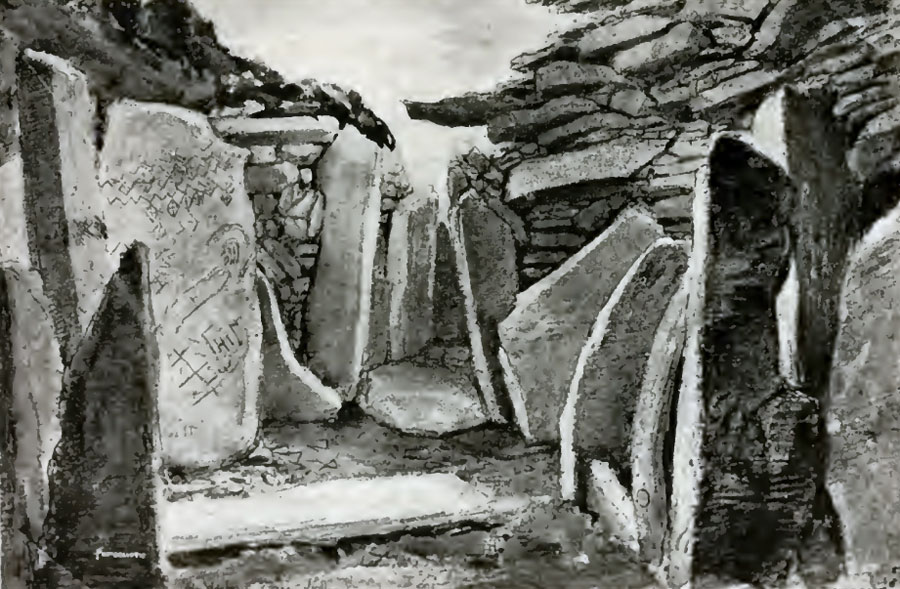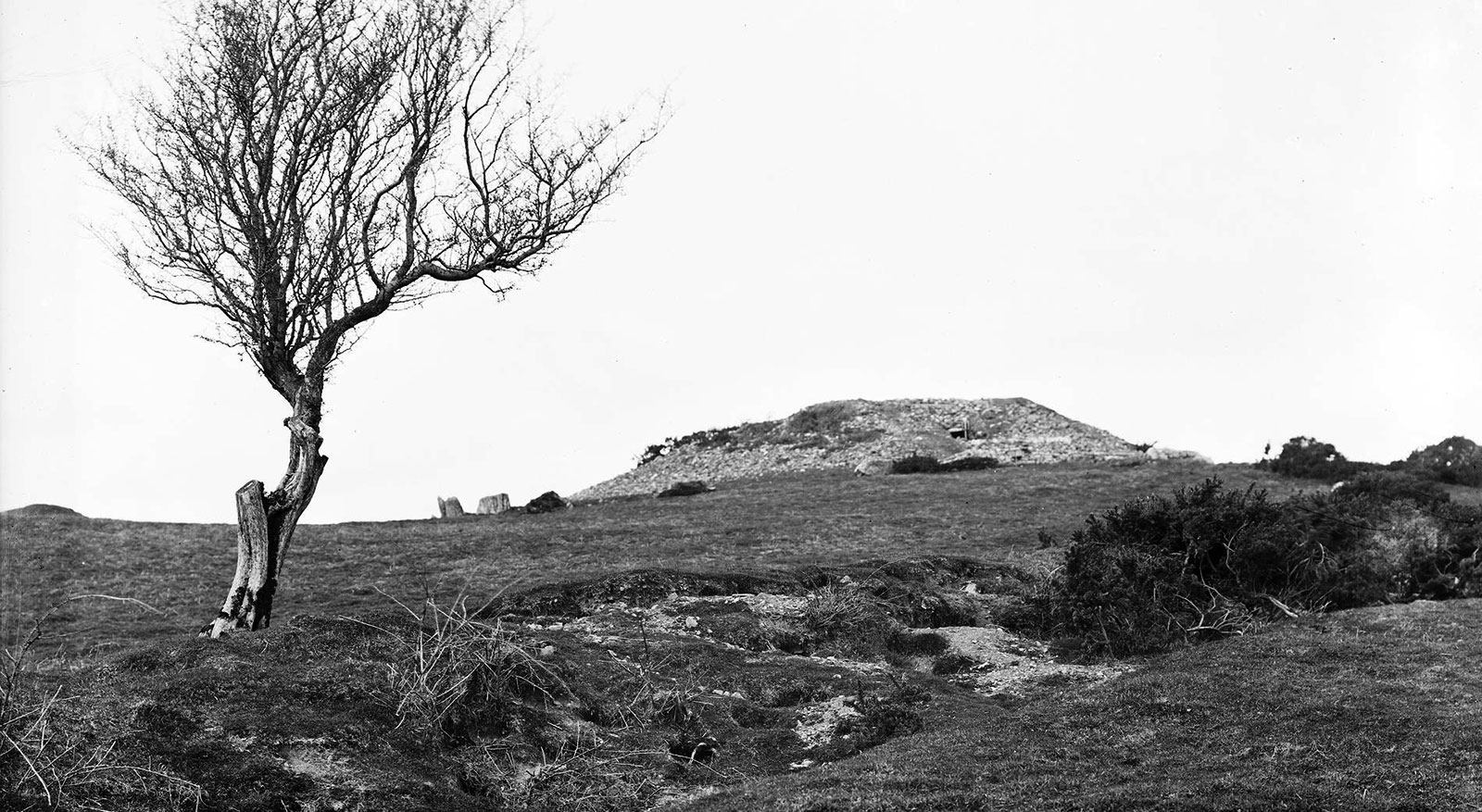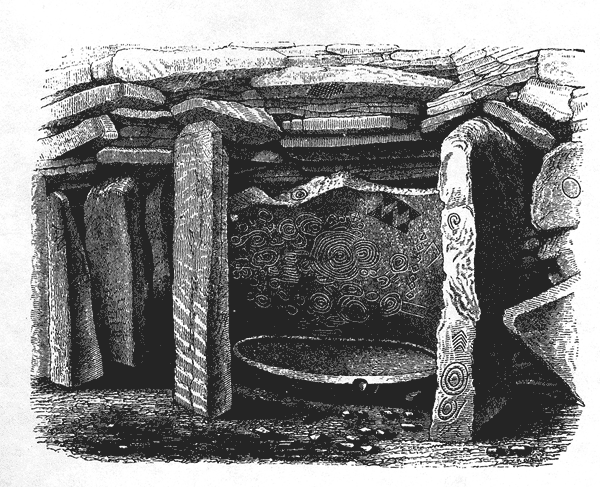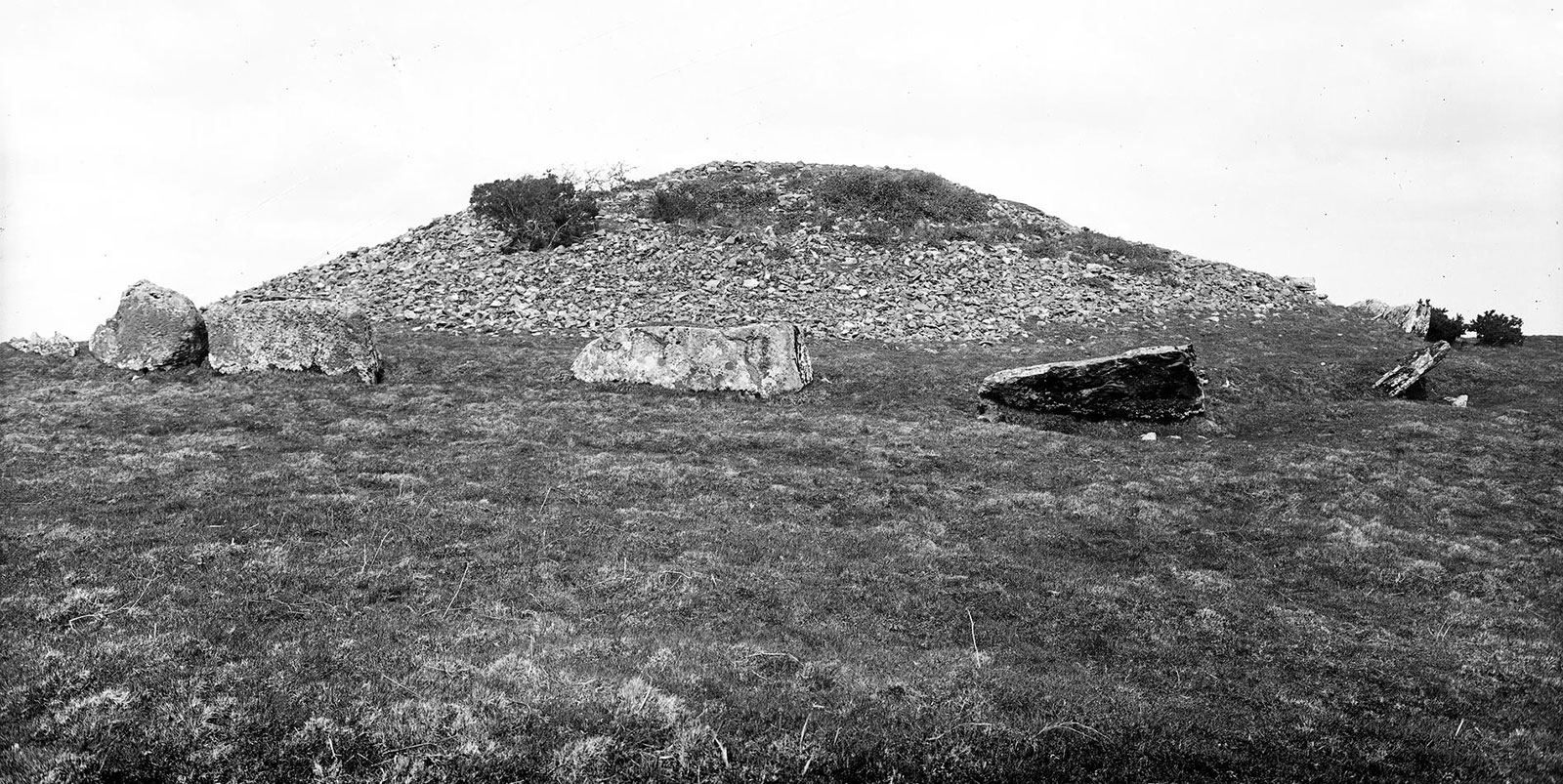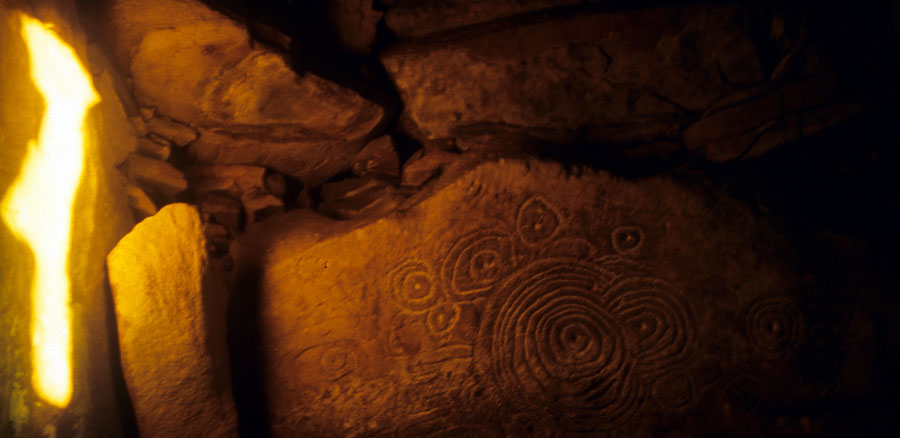Cairn L - Conwell's excavation
Eugene Conwell describes his excavations at Cairn L which took place in 1865 and were published in 1873.
Carn L is forty-five yards in diameter, surrounded by 42 large stones, laid length-wise on their edges, and varying from six to twelve feet in length, and from four to five feet high. Great quantities of the loose stones which formed the apex of this carn have been removed, of which there are very visible evidences.
A curve inwards in the circumference of ten yards in length, on each side of a point having a bearing of East 20° South, indicates the direction of the entrance or passage which commences at a distance of eighteen feet inward from the circumference.

Finding a large flag on the top of the mutilated carn, we removed it and two others before we observed that we were actually taking to pieces what remained of the original construction of the roof.
The principal portion of the overlapping flags which formed the roof over the chambers had disappeared, leaving them filled up with the loose stones which had fallen in.
When the chambers were carefully cleared of these small stones, they exhibited in situ about forty of the large plinths which formed the matchless, dry, cyclopean masonry of the roof.
This dome was constructed of large slabs overlapping one another, and bevelled slightly upwards, having most ingeniously inserted between them thinner slabs, which, on receiving the superincumbent weight, became crushed, and formed a bond for the whole.
Wherever this precaution of placing thinner slabs or smaller stones between the larger ones was omitted, the larger slabs themselves are now found cracked across. What at present remains of this unique roofing rises twelve feet above the level of the floor, which is even with the ordinary surface of the ground. The breadth of the passage at the commencement is one foot ten inches, which increases to upwards of three feet about the middle, and contracts again to one foot nine inches where it terminates.

The passage itself is twelve feet long; and the entire length, from the commencement of the passage to the extremity of the western chamber, is twenty-nine feet. The greatest breadth across the chambers is thirteen feet two inches, measured from nearly north and south points, diminishing to ten feet four inches where the passage terminates.
The seven chambers composing the interior of this great tomb are quadrangular and nearly square; the first on the left-hand side, at the termination of the passage, is four feet eight inches in breadth; the second three feet six inches; the third two feet two inches; the fourth four feet three inches; the fifth five feet ten inches; the sixth three feet five inches; and the seventh two feet six inches.
From among the loose stones wliich filled up the chamber we collected 1010 portions of bones; two bone flakes similar to those found in Carn H; 154 fragments of very rude pottery, varying in size from one to thirty square inches. Some fragments retain their original brown colour, but the generality of them are much blackened by fire on the inside surface, and for a distance round the exterior of the lip, or upper rim of the urns, of which they were parts.
One piece, a portion of the upper edge of an urn, about three inches long and three broad, is very rudely ornamented with three slight ridges; and about an inch from the top is perforated by a single hole. Another larger piece, ornamented with four slightly raised ridges, is perforated by two holes, one an inch and a half below the other.

